 Various running stories, especially those funny ones, are really enjoyed by many people because they actually happened in real situations. During running competitions, various unusual things like an attack of birds and goats and verbal abuse from one runner to another really happened to a runner named, “Bigeasy.” Another funny running story experienced by Ryan Chung, a 13-year old runner, was during his participation in the 1000m running event. An old participant in the competition sarcastically said, “Run, Forest, run!” because he was already behind Ryan. Ryan just kept on running when suddenly, a few minutes later, he realised that the old man had stumbled and fallen! A story shared by “ahabchaser” is also a humorous one that occurred in Hong Kong (HK). According to this runner, he was running along with his five-month old son in HK when suddenly he encountered different types of wild animals, including a cobra, banana spider and monkeys. Numerous other locals in Hong Kong, witnessing her super fast running to avoid those animals, laughed, and one woman even scolded her for pushing her baby so fast! “Kimmi” has an interesting and funny idea about running, which is about running shoes and how people run in them. This runner focuses on the shoes of his opponents during competitions and found that the most common shoes used are those with heavy features, including basketball trainers and cross trainers!.
 Since running is one of the most stressful activities in multisport, expect that some injuries may occur to the runners. They may sustain injury to any part of the body however, since they are running, the most common part of the body being used is the lower extremities. Once the lower extremities are being overused, injury may occur anytime, such as injury on the arch of the foot that may cause arch pain. Arch pain is the inflammation or/and burning sensation at the arch of the foot. It is caused by inflammation due to excessive stretching of the plantar fascia (a diverse band of fibrous tissue along the base of the foot surface), commonly caused by over-pronation (excessive inward motion). Generally, the cause of arch pain is a common condition named plantar fasciitis. Arch pain is extreme in the morning when the individual first gets out of bed or after hours of resting. If such a condition is left untreated and the strain on the longitudinal arch continues, there is a possibility that a heel spur (a bony protrusion) may develop. Treatment of arch pain usually begins with conservative treatment before the individual is required to undergo radical treatment. This conservative treatment includes foot massage and medically designed orthotic insoles, such as WalkFit. WalkFit orthotics is a foot support system intended to help relieve over-pronation, while avoiding further foot injury and strain.
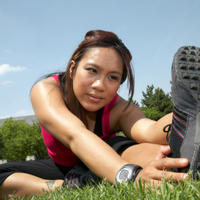 Running is a strenuous kind of sport that involves the muscular part of the body. During the running activity, most runners experience different injuries. Along with the benefits that running can provide, there are also many risks that come with it. In order to prevent injury that you might sustain during the course of running, you must consider your health. Before venturing into running, consult first a doctor to examine your health and level of fitness. Determine how much your body can tolerate the stress that running can cause. Next, be aware that you must have the proper shoes and clothes when running. Wearing shoes that have lost their durability and cushioning may lead to new injury and may aggravate existing problems. You should also be conscious about your running style as this may also cause injuries. As a runner, you must also do some warm-up exercises, such as stretching, before going for a run. Consider also the surfaces that are appropriate for running so as not to overstrain the foot, legs, hips and back. While running, apply a sun-block cream to the skin or stay away from too much exposure to the sun. This may not strain the muscles but it can cause irritation to the skin. Good nutrition and a well-balanced diet should also be observed if you wish to run.
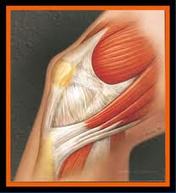 Patellofemoral syndrome is a softening of the patella (cartilage under the kneecap) that results in small areas of breakdown and pain around the knee. Rather than sliding easily above the knee, the knee cap rubs adjacent to the femur (the thigh bone) when the knee moves. The changes can vary from mild to complete corrosion of the cartilage. Chondromalacia patella, in technical terms, is the most usual cause of chronic knee pain. This syndrome usually occurs in female teenagers because the knee is subjected to extreme and unequal pressure due to their rapid growth and adults over 40 as part of the wear-and-tear process that in time leads to osteoarthritis.
You’ll know that you have this condition if you feel a mild discomfort in the inner knee area, like a vague sense of ‘tightness’ or ‘fullness’. Sometimes, if chronic indications are disregarded, the associated loss of thigh (quadriceps) muscle strength may have the leg to give out. In addition, an obvious lessening in quadriceps muscle mass and mild inflammation of the knee area may appear.
Treatment for patellofemoral syndrome involves improving the alignment of the patella during contraction of the thigh muscle. To minimise the pain, avoid activities that will irritate the kneecap, like jumping, running, going down the stairs, climbing, or prolonged sitting with knees in a bent position. Using ice and anti-inflammatory medications (such as Naproxen [Aleve] or Ibuprofen [Advil/Motrin]) could help. Cardiovascular conditioning may be maintained by pool running, stationary bicycling , or swimming (flutter kick).
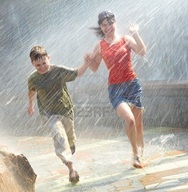 Quickfire training session for the rain is a quick session on a rainy day or on a damp road for amateur road runners. This may serve as a good exercise daily; however, our body also needs time to recuperate. That’s why running is recommended three to four times a week. To jumpstart the session, it is advisable to have a good pair of running shoes because the road is slippery when it is damp or wet. The landmark or space for this activity should be enough for the 15-minute run. Now, all is set for the quick training session.
First, do some stretching as you warm-up indoors to gradually condition the body and the heart rate. This should be done especially by unfit individuals. It is recommended that they consult their doctors first before starting any exercise or training programme like this. Research shows that proper warm-up improves muscle efficiency and prevents muscle tears and strains.
Second, choose a landmark for a 15-minute run and assign a starting point and a goal. Third, run as fast as you can from the starting point to the goal then stop when 15 minutes have elapsed, even if you have not reached the goal. Then turn around and run back to the starting point faster than the first run. Repeat this process and attempt going farther than you did at your previous run.
 In theory, you can just get out there and go for a run, without giving it much thought. But if you struggle with running, or you don’t feel right doing it, it’s worth paying attention to your posture and technique. Thus, here are certain tips for the correction of your running form.
When you run, you have to look forward. While running, make sure that your head is positioned on the top of your spine. Never look downward or even bend forward; it may result in injury. Your head weighs at least 13 pounds, so in order to keep your body erect, just keep your jaw and face relaxed.
Just stay loose; your shoulders should be kept loose and relaxed. Creating tension by tightening and shrugging your neck and shoulders wastes energy and consumes your energy too quickly.
You need to stretch yourself to full height with no tension from your torso. This allows you to breathe maximally and place your body towards moving forward in an optimal biomechanical position. Accordingly, your hips will be close to your body’s gravity centre and will be in accurate alignment once your head and torso are aligned.
Maintain your knees low so that your ankles will help you increase your speed. Then, just feel your calf muscles and ankles work as you step forward, while your arms stay closer to your body. Swing them back and forth but not across to your body’s middle.
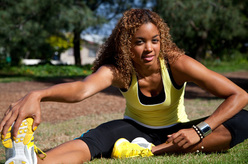 Running is good exercise as well as a good sport. If you have never tried running, here are some of the steps on how to start. In no time, you will begin a programme for getting in shape and losing weight. Before running, one should have a pair of good running shoes. If you don’t have shoes, you can go to a sports shop; they can help you with your choice. After purchasing, find a place for running. A treadmill can be a good place to start. Before running, warm up by walking at a fast pace for about 5 to10 minutes. Bear in mind that in running, it is important to start at a slow pace. Do not push your body the first time. A runner should know his physical limits. Start jogging and alternate it with walking. Stop for a while to monitor your heart rate. Monitoring can be done by observing how fast the heart is beating or through a heart rate monitor. Then, continue running and after a few runs, run more and walk less until you are running continuously without stopping. Vary the training so you will not get bored. You can always change your routine, run with new scenery, or increase the length of time or pace. Have fun, for running can not only get the runner in shape but it can also be relaxing once you are into the habit.
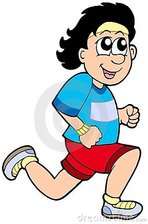 Running is the favourite sport of many people today. In fact, different types of races are being organised for this kind of sport every year, which many people join enthusiastically. However, due to the large number of individuals who want to join these competitions, some are prompted to do nasty things, like stealing other people’s race numbers. During the City of Angeles Half Marathon in 2006, a father reported to the event organiser about an incident concerning his daughter’s race number. According to him, his daughter’s race number was stolen and used by an unknown runner. His daughter had been registered for the marathon race and was supposed to run in the competition. However, when they arrived at the Expo, they found out that his daughter’s running bag was lost. Upon discovering that someone had stolen it, he immediately reported the incident. He eventually realised that the culprit had not registered in the race, but was able to join and finish the race using his daughter’s number. The thief completed the race in 2 hours, 33 minutes and 03 seconds with split time at 1000 in one hour and 14 seconds and with several paces. This funny running story is based on the accounts of Baldrunner, a famous group of professional runners in Asia that includes Rosalina Pascual, Javy Olives, and Cresenciano Sabal.
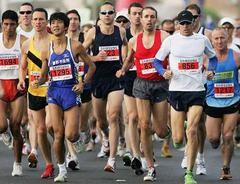 Marathon and long distance running are among the most popular fitness activities, worldwide. Running is a simple exercise that doesn’t cost very much, and can be done anywhere. However, running is also one kind of sports that comes with dangers. Running may be hard on the joints, particularly if one is overweight or untrained. It is also tough on the lower portion of the back and excessive mileage is not good for hormones, stress levels, fat loss and weight loss. Long distance runners and marathoners make three common mistakes when organising or planning their training. The first mistake they make is not performing sufficient strength training. Undertaking a good programme for strength training with a sports performance expert or a personal trainer will help running become faster, more efficient and reduce the possibility of injury. In addition, glutes, hamstrings and the back needs to be strengthened to aid in posture, performance and injury resistance. Another mistake runners make is not correcting past injuries or functional problems. Runners are apt to enjoy running, even while in pain. Hence, runners put on various kinds of wraps and guards. However, the guards don't correct basic problems and the condition may take its toll on other body parts. Running while injured causes the overuse of other parts of the body which are likely to sustain injury as well. Therefore, it is important to see a good performance coach or personal trainer and physical therapist who know how to fix and diagnose movement problems.
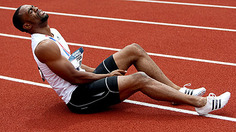 Running is a really enjoyable activity and sport. Every day, people throughout the world participate in this sport; some run on the track, some on trails, some on the treadmill, and others run in their neighbourhood. No matter where you run or how often you do it, chances are, either you are at risk of getting an injury or you have dealt with an injury already. There are various things that may occur while running that can cause injury. Shoes that don’t exactly fit or a muscular imbalance are possible causes of injury. You can also trip over a stick or a rock, or slip on wet pavement. Generally, there are several things that can go wrong; the focus should be on eliminating as many of these causes as possible. If you are injured while running, it is important to consult a doctor to examine the injury and take x-rays and recommend the best treatment for you. He will give you instructions for when you can run again. Some injuries that may occur while running are shin splints, tendonitis, sprains, strains, broken bones, and bruises and blisters. For most people, injuries can be frustrating. Healing demands time away from the sport, and for those who love it, it’s a hard task for them. But it is still important to remember that the quickest and easiest way to remedy a running injury is to quit running.
|










 RSS Feed
RSS Feed